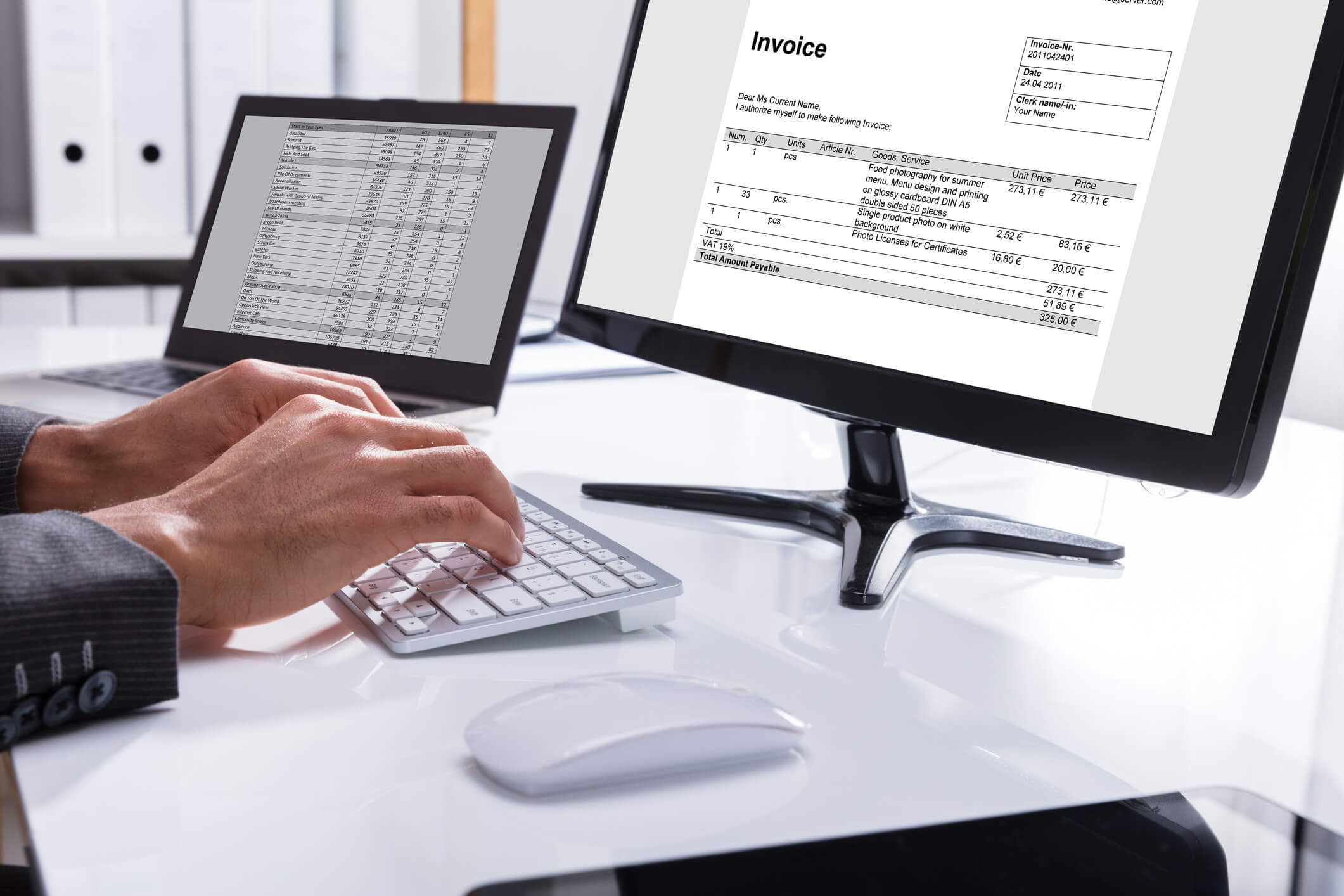By: Jennifer Brazer
Jennifer is the author of From Cubicle to Cloud and Founder/CEO of Complete Controller, a pioneering financial services firm that helps entrepreneurs break free of traditional constraints and scale their businesses to new heights.
Fact Checked By: Brittany McMillen
3 Golden Rules for Writing Invoice Terms That Get You Paid On Time
Have you ever sent off a flawless invoice, only to wait… and wait… and wait for payment that never arrives on time? You’re not alone—and the culprit may not be your client. It might just be your invoice terms.
As someone who’s written and reviewed invoice conditions for everyone from solo freelancers to mid-size agencies over my 20+ years in financial services, I can tell you: your payment terms aren’t just a polite afterthought—they’re your first line of defense against cash flow problems.

Why Invoice Terms Matter More Than You Think
If you’ve ever been ghosted by a client after delivering stellar work, here’s a tough truth: unclear invoice terms often give people the loophole they need to delay payments—or dispute them entirely.
The numbers don’t lie. According to Atradius, only 36% of invoices in the U.S. are paid on time, while 55% are paid after their due date. This isn’t just a minor inconvenience—it’s a serious business problem.
Invoice terms are the conditions you attach to your invoice: when payment is due, how it should be made, penalties for late payments, and any rewards for settling early. Think of them as the fine print that makes your business run smoothly.
When done right, these terms:
The impact of late payments goes beyond just waiting for money. Nerdwallet reports that 28% of business owners had to delay hiring new employees because of late payments affecting their operations. Payment terms aren’t just paperwork—they’re your business lifeline.
Historical Perspective: Why 30-Day Terms Became Standard
In the past, payment terms were less standardized and often shorter. Today, 30-day payment terms have become the norm due to their balance of financial needs and legal compliance.
According to DocuClipper, 54% of businesses set standard payment terms at 30 days after the invoice date, while only 11% required payment within 7 days. This shift happened as businesses recognized the need for standardization while giving clients reasonable time to process payments.
Real World Win: How One Simple Change Made a Big Difference
A small design agency I worked with struggled with late payments for years. They used the term “Net 30” on all invoices—and assumed everyone knew what it meant. Turns out, their clients didn’t.
We switched to clear, dated terms: “Payment due on or before June 20, 2024.” Within a month? Fewer follow-ups. Happier clients. More cash in the bank.
This simple change created clarity that benefited everyone. The agency stopped feeling like the “bad guy” for asking about late payments, and clients appreciated knowing exactly when payment was expected.
Rule #1: Be Crystal Clear With Payment Terms
First and foremost: clarity wins.
Vague or industry jargon like “Net 30” or “COD” only works if your client speaks fluent invoice. And many don’t. For reference, a shocking 86% of small and medium-sized businesses still manually enter invoice data, according to DocuClipper, which increases the chance for misinterpretation.
Here’s how to get clear:
- Replace relative terms with real dates: “Payment due June 30, 2024” is better than “Net 30.”
- Include acceptable payment methods: ACH, PayPal, credit card, check?
- Detail early payment incentives: “Save 2% if paid within 10 days.”
- Don’t sidestep consequences: “A 1.5% monthly late fee applies after 30 days.”
If you’re still using terms like “Net 30,” consider that many clients may need help understanding invoice terms like “Net 30” and what they actually mean in practice.
For more detailed guidance, check out our best practices for invoicing payment terms.
Sample Clear Payment Line:
📝 “All invoices are due within 15 days of issue date. A 2% discount applies if paid within 7 days. Late payments incur a 1.5% monthly fee beginning 30 days after the issue date.”

Rule #2: Make It Legal (But Not Intimidating)
Invoice terms are legal documents—but that doesn’t mean they need to sound like courtroom transcripts.
Still, legal alignment is non-negotiable. You need to:
- Comply with regional laws on invoicing, payment terms, and penalties.
- Ensure the language supports (not conflicts with) your contract.
- State dispute resolution terms if necessary.
For example, in some countries, charging interest on late payments above a certain rate is illegal. Each region has specific late-payment interest regulations you should understand before setting your terms.
If in doubt? Talk to a local accountant or legal professional. Or use platforms that bake legal compliance into their invoicing templates—many freelancer-friendly tools do.
Large businesses understand this well—65% have implemented automated invoice data entry systems to ensure consistency and legal compliance. For smaller businesses, this same approach can reduce errors and ensure your terms are both legal and effective.
Rule #3: Never Forget the Human
Yes, you’re running a business. But so is your client. And relationships are everything.
I’ve helped hundreds of businesses rewrite invoice terms using natural, respectful language—and conversion rates (aka, getting paid faster) go up nearly every time.
Replace cold lines like:
“FAILURE TO PAY WILL RESULT IN COLLECTIONS.”
With:
“If you ever have questions about this invoice, please feel free to reach out—we’re happy to help!”
Also:
- Always include a “Thank You” at the bottom of your invoice.
- Consider adding a friendly note: “We appreciate your business and prompt payment.”
- Use tools that personalize invoices with the client’s first name or company.
Trust builds momentum. Politeness smooths friction. And people are more likely to pay people they like.
Tools That Make This Easy
Don’t want to manually calculate late fees or remember due dates?
Here are a few invoicing tools that let you automate terms and tone:
- FreshBooks – perfect for service-based freelancers
- QuickBooks – robust for small to mid-size businesses
- FreeAgent – with real-time payment reminders
- Zoho Invoice – flexible and client-friendly
These platforms let you standardize your invoice terms, keep legal wording consistent, and get paid faster, automatically. Learning small-business bookkeeping essentials alongside these tools can further streamline your financial processes.
Special Consideration: Invoice Terms for Freelancers
Working solo means you probably wear all the hats—from writer or designer to CFO.
A few quick tips if you invoice as a freelancer:
- Include a clause for milestone payments for long projects.
- Be flexible but firm: hourly vs. fixed rates may require different terms.
- Align invoices with your contract—and always require a signed agreement.
The Small Business Administration offers excellent invoicing guidelines for freelancers that can help you refine your approach.
Even a one-person business can operate like a pro with consistent, clear invoice wording.
Conclusion: Clarity, Legality, and Humanity Win
If your invoices aren’t getting the results you want, the fix may be simpler than you think. By following the three golden rules—write clear payment terms, ensure legal compliance, and prioritize a human-friendly tone—you position your business as trustworthy and professional.
It’s not just about getting paid. It’s about how your clients feel while doing it.
Ready to transform your invoicing process and improve your cash flow? At Complete Controller, we help businesses like yours implement systems that get you paid faster while maintaining strong client relationships. Visit CompleteController.com today for expert bookkeeping, controller, and financial management services that will revolutionize how you handle your finances.

FAQ
What should be included in invoice payment terms?
Invoice payment terms should include the exact due date (not just “Net 30”), accepted payment methods, early payment discounts, late payment penalties, and clear contact information for payment questions. Also include your company’s legal name, tax ID, and banking details for direct transfers.
How do you write payment terms on an invoice?
Write payment terms in plain language directly on the invoice. For example: “Payment due by [specific date]. Please pay via [payment methods]. Questions? Contact [name] at [email/phone].” Always include a specific calendar date rather than relative terms like “within 30 days.”
How do I get clients to pay invoices on time?
To get clients to pay on time: 1) Set clear expectations upfront in contracts, 2) Send invoices promptly after work completion, 3) Make payment easy with multiple options, 4) Send friendly reminders before due dates, and 5) Offer early payment discounts to motivate prompt payment.
What are examples of payment terms?
Examples of payment terms include: “Payment due within 15 days for a 2% discount or net amount due within 30 days” (2/15 Net 30), “Payment due immediately upon receipt,” “50% deposit required before work begins, 50% due upon completion,” or “Payment due on the 1st of each month for ongoing services.”
Are invoice terms legally binding?
Yes, invoice terms are legally binding when they reflect terms agreed upon in a signed contract or when the client has acknowledged and accepted them. To strengthen legal standing, ensure your invoice terms align with your contract language and include all required elements under local business laws.
Sources
- Accounting Times. (2024). “Crafting Comprehensive Invoice Terms.” J. Smith. (No URL provided)
- Atradius. (2025). “Late Invoicing Statistics.” (No URL provided)
- CompleteController.com. “Business Bookkeeping Essentials.”
- https://www.completecontroller.com/business-bookkeeping-essentials/
- CompleteController.com. “Mastering the Cash Conversion Cycle.”
- https://www.completecontroller.com/mastering-the-cash-conversion-cycle/
- CompleteController.com. “Payment Terms for Small Biz.”
- https://www.completecontroller.com/payment-terms-for-small-biz/
- DocuClipper. (2025). “Accounts Payable Statistics For 2025.” (No URL provided)
- Freelance Insights. (2022). “Invoicing Best Practices for Freelancers.” A. Johnson. (No URL provided)
- GOV.UK. “Late Commercial Payments Interest Debt Recovery.”
- https://www.gov.uk/late-commercial-payments-interest-debt-recovery
- Investopedia. “Understanding Net 30 Terms.”
- https://www.investopedia.com/terms/n/net-30.asp
- Nerdwallet. (2025). “Late Payment Statistics.” (No URL provided)
- Small Business Administration. “How to Create an Invoice That Gets Paid Faster.”
- https://www.sba.gov/blog/how-create-invoice-gets-paid-faster
- Small Business Journal. (2023). “Case Study: Clear Payment Terms.” (Author unnamed). (No URL provided)
- Small Business Journal. (2023). “Effective Invoicing for Small Businesses.” R. Patel. (No URL provided)
- Stripe. (2025). “What Businesses Need to Know About 30 Days Payment Terms.” (No URL provided)
 About Complete Controller® – America’s Bookkeeping Experts
About Complete Controller® – America’s Bookkeeping Experts Complete Controller is the Nation’s Leader in virtual bookkeeping, providing service to businesses and households alike. Utilizing Complete Controller’s technology, clients gain access to a cloud platform where their QuickBooks™️ file, critical financial documents, and back-office tools are hosted in an efficient SSO environment. Complete Controller’s team of certified US-based accounting professionals provide bookkeeping, record storage, performance reporting, and controller services including training, cash-flow management, budgeting and forecasting, process and controls advisement, and bill-pay. With flat-rate service plans, Complete Controller is the most cost-effective expert accounting solution for business, family-office, trusts, and households of any size or complexity.




 About Complete Controller® – America’s Bookkeeping Experts Complete Controller is the Nation’s Leader in virtual bookkeeping, providing service to businesses and households alike. Utilizing Complete Controller’s technology, clients gain access to a cloud-hosted desktop where their entire team and tax accountant may access the QuickBooks™️ file, critical financial documents, and back-office tools in an efficient and secure environment. Complete Controller’s team of certified US-based accounting professionals provide bookkeeping, record storage, performance reporting, and controller services including training, cash-flow management, budgeting and forecasting, process and controls advisement, and bill-pay. With flat-rate service plans, Complete Controller is the most cost-effective expert accounting solution for business, family-office, trusts, and households of any size or complexity.
About Complete Controller® – America’s Bookkeeping Experts Complete Controller is the Nation’s Leader in virtual bookkeeping, providing service to businesses and households alike. Utilizing Complete Controller’s technology, clients gain access to a cloud-hosted desktop where their entire team and tax accountant may access the QuickBooks™️ file, critical financial documents, and back-office tools in an efficient and secure environment. Complete Controller’s team of certified US-based accounting professionals provide bookkeeping, record storage, performance reporting, and controller services including training, cash-flow management, budgeting and forecasting, process and controls advisement, and bill-pay. With flat-rate service plans, Complete Controller is the most cost-effective expert accounting solution for business, family-office, trusts, and households of any size or complexity.














